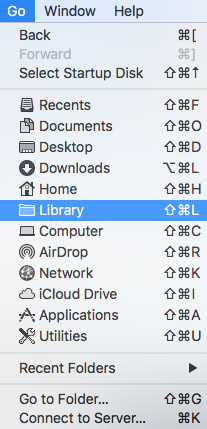The name of your macOS user account and the name of your home folder must both be the same. Changing these names does not change or reset the password of your user account.
Because doing this incorrectly could damage your account and prevent you from logging in, you should back up your important data before proceeding.
First rename the home folder
- Log out of the account you're renaming, then log in to a different administrator account. (If you don't have another administrator account, you can create one in Users & Groups preferences.)
- Open the Users folder on the startup disk. It contains the home folder for each user. To get there, you can choose Go > Go to Folder from the menu bar, then enter
/Users. - Rename the user's home folder without using any spaces in the new name. You'll be prompted to enter the administrator name and password that you used to log in. If you're using file sharing to share the home folder, you won't be able to rename it until you stop sharing the folder.
Then rename the account
While still logged out of the account you're renaming, follow these additional steps:
- Choose Apple () menu > System Preferences, then click Users & Groups.
- Click , then enter the administrator name and password that you used to log in.
- From the list of users on the left, Control-click the user you're renaming, then choose Advanced Options.
- Change the “Account name” field to match the new name of the home folder. It should have no spaces.
- The account name also appears in the “Home directory” field, after
/Users/. Change that account name to match the new name of the home folder. - If you want to change the full name associated with your account, update the ”Full name” field as well. It can be any name, and you can use either the full name or the account name to log in to your Mac or make changes that require your name and password.
- Click OK, then restart your Mac.
- Log in to the renamed account, then verify that your old files and folders are visible and the account is working as expected.
2. Forge Commands
This key combination will display any hidden folders in your Mac's hard drive. Any hidden folders or files will appear as grayed-out. This keyboard shortcut can be done from any Finder window. The main Hard Drive folder usually contains hidden system files and folders so you should be able to see this better here when the hidden files are. Import into folder: allows you to select a folder to import your data into. Options opens the settings for RoboForm in a new window. Help Menu provides helpful resources about RoboForm. Manual on Editor opens the RoboForm manual for the Editor in a new web page. Entire Manual opens the RoboForm manual in a new web page. Your Mac makes it easy to be entertained—from watching the latest shows on Apple TV+ to playing groundbreaking new games in Apple Arcade. Learn about media apps on your Mac To explore the macOS User Guide, click Table of Contents at the top of the page, or enter a word or phrase in the search field. View & download of more than 50 Master Forge PDF user manuals, service manuals, operating guides. Grill, Indoor Furnishing user manuals, operating guides & specifications.
Forge comes with a handful of commands that help make theme development easy.
2.1 forge create
Creates the your_theme directory if it doesn't exist, and sets up a new Forge project in that directory.
A new Forge project contains directories for your assets, templates, functions and includes. Forge also generates a few standard WordPress templates and adds some example Sass / CSS.

See how Forge works for a detailed explanation of how a Forge project is structured.
2.2 forge link
Must be run from within a Forge project.
Creates a symbolic link from /path/to/wordpress_install/wp-content/themes/your_theme to the hidden Forge build directory (.forge/build). After running forge link, any changes you make while running forge watch will be reflected in your WordPress installation.
forge link is just a convenient way to run ln -s .forge/build /path/to/wordpress_install/wp-content/themes/your_theme
You'll need to run forge link once for every WordPress install you want to test your theme with.
2.3 forge watch
Must be run from within a Forge project.
Watches the source directory in your project for changes and compiles those changes in the Forge build directory (.forge/build), which should be linked to your WordPress installation after running forge link.
forge watch is where the magic happens - you need to leave forge watch running while working on your project.
For a more detailed explanation of what happens during forge watch, check out how Forge works.
2.4 forge build
Must be run from within a Forge project.

Compiles the theme from the source directory into the build directory. If you want to build somewhere other than build, you can specify the directory by running forge build my_build_directory.
forge build is useful if you want to review Forge's output before releasing your theme.

2.5 forge package

How To Install Forge On Mac
Must be run from within a Forge project.
Minecraft Forge Folder Location
Compiles the theme and zips it to package/your_theme.zip. To name the zip file, run forge package your_name and the theme will be compiled to package/your_name.zip.